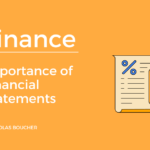Do you take any cash flow activities to manage your financial health?
Managing cash flow effectively is vital for the financial health and sustainability of any business.
By segmenting cash flows into these categories, we gain a clearer understanding of where the cash comes from and how it impacts a company’s financial health.
Therefore, we will learn the top three cash flow activities – operating activities, investing activities, and financing activities – and discuss their importance in maintaining a robust cash flow.
Table of Contents
Why Is It Important?
Maintaining healthy cash flow is essential for several reasons:
- Liquidity and solvency: Adequate cash flow ensures that a business has sufficient funds to cover day-to-day operations, pay its debts, and meet financial obligations promptly.
- Working capital management: Effective cash flow management allows businesses to optimize their working capital by efficiently managing inventory, receivables, and payables.
- Growth opportunities: Positive cash flow provides the financial flexibility to invest in growth initiatives, such as expanding operations, launching new products, or entering new markets.
The Top 3 Cash Flow Activities
Now, let’s delve into the top three cash flow activities and explore how they impact a company’s financial health.
Operating Activities
Operating activities represent the day-to-day revenue-generating activities of a business.
Moreover, these activities include the buying and selling of inventory, receipts from debtors, payments to creditors, and the payment of expenses.
Cash Inflows
- Money received from sales
- Commission and fees
- Money received from other incomes (e.g., royalties, subventions)
Cash Outflows
- Money paid for inventories
- Money paid for expenses
- Money paid for taxes
- Payment to creditors
- Payment of wages
Managing operating activities effectively is crucial as they are often the primary source of cash for a company.
In other words, by optimizing sales, controlling expenses, and efficiently managing inventory and receivables, businesses can improve their cash flow position.
Investing Activities
Investing activities involve the acquisition and disposal of long-term assets and investments.
Furthermore, this includes buying and selling tangible fixed assets and any changes in investments, such as purchasing shares from other companies.
Cash Inflows
- Money received from the sale of assets
- Fixed deposits maturing
- Sale of investments
- Interest received
- Dividends received
Cash Outflows
- Acquisition of capital expenditures (CAPEX)
- Purchasing properties
- Investing in fixed deposits
- Purchase of investments
Investing activities can have a significant impact on cash flow, as they involve substantial capital expenditures and returns.
In addition, companies must carefully evaluate investment opportunities, balancing the need for growth with maintaining adequate cash reserves.
Also, strategic asset management and investment decisions can help optimize cash flow and ensure a positive return on investment.
Financing Activities
Financing activities involve cash changes resulting from obtaining financing and repaying debts, as well as the issuance and repurchase of shares.
Cash Inflows
- Money received from issuing shares
- Money received from obtaining loans
Cash Outflows
- Money used for repaying loans
- Company’s stock repurchase
- Cash dividends
Managing financing activities effectively is crucial for maintaining a healthy capital structure and meeting financial obligations.
As a result, businesses must strike a balance between leveraging external financing options and minimizing debt burdens.
Additionally, dividend policies and share repurchases should be carefully evaluated to ensure they align with the company’s financial goals.
Last Tips
- Implement effective cash flow forecasting and monitoring systems to anticipate and address potential cash flow gaps.
- Negotiate favorable terms with creditors, suppliers, and lenders to optimize payment terms and cash flow management.
- Consider alternative financing options, such as leasing or factoring, to improve cash flow and maintain liquidity.
- Regularly review and optimize your pricing strategies to ensure they align with your cost structure and market conditions, enhancing profitability and cash flow.
Wrap-Up – Cash Flow Is Essential for Good Financial Health
To sum up, optimizing cash flow activities is essential for maintaining the financial health and stability of a business.
Therefore, by effectively managing operating activities, investing activities, and financing activities, businesses can ensure sufficient liquidity, capitalize on growth opportunities, and meet financial obligations.
Subsequently, strategic cash flow management serves as a foundation for long-term success and resilience in a dynamic business environment.
In the end, I have one question for you.
Do you have what it takes to be an effective finance professional in the next ten years? Get my course today and get on the right path toward achieving your goal!
Key Takeaways
- Effective cash flow management is vital for liquidity, working capital optimization, and growth opportunities.
- Operating activities involve day-to-day revenue generation and expense management.
- Investing activities encompass asset acquisition, divestment, and investment decisions.
- Financing activities include obtaining financing, repaying debts, and managing capital structure.
- Careful evaluation and optimization of each cash flow activity are essential for financial health.
- Implement cash flow forecasting and monitoring systems to anticipate and address potential gaps.
- Negotiate favorable terms with creditors, suppliers, and lenders to optimize cash flow.
- Explore alternative financing options to enhance liquidity and manage cash flow.
- Regularly review pricing strategies to align with costs and market conditions.
- Strategic cash flow management lays the foundation for long-term success and resilience.











